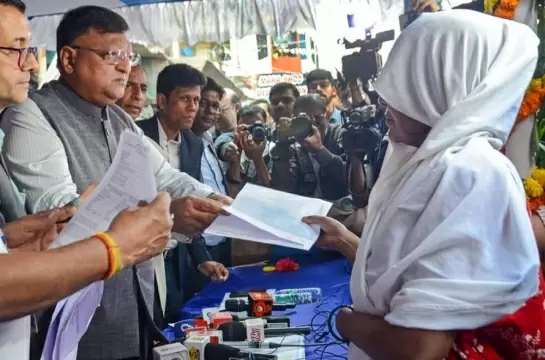'Carbon footprint in India can be reduced by 20%'
12-December-2019
The carbon footprint of the use and production of cars in G7, China or India would decline by 20 per cent if one in four journeys in these countries is a shared ride, the leading global scientific panel working on the sustainable management of natural resources said in its first comprehensive scientific analysis.
The report focuses on the potential to reduce greenhouse gas emissions from the two most carbon-intensive products -- passenger cars and residential buildings.
Producing and using materials more efficiently to build passenger cars and residential homes could cut carbon dioxide (CO2) equivalent emissions between 2016 and 2060 by up to 25 gigaton across the Group of Seven (G7) member states, the International Resource Panel (IRP) finds in a summary for policymakers released here on Wednesday.
This is more than double the annual emissions from all the world's coal-fuelled power plants.
The IRP finds that emissions from the production of materials like metals, wood, minerals and plastics more than doubled over the 20-year period to 2015, accounting for almost one-quarter of all greenhouse gas emissions.
It warns that without boosting material efficiency, it will be almost impossible and substantially more expensive to keep global heating below 1.5 degrees Celsius -- the more ambitious of the two Paris climate targets.
The IRP Summary for Policymakers, Resource Efficiency and Climate Change: Material Efficiency Strategies for a Low-Carbon Future, prepared at the request of the G7, is the first comprehensive scientific analysis estimating total cuts in greenhouse gas emissions in homes and cars that can be achieved through material efficiency.
Together, the construction and manufacturing sectors are responsible for an estimated 80 per cent of emissions generated by the first use of materials.
Using strategies and technologies that already exist, G7 countries could save up to 170 million tons of carbon emissions from residential homes in 2050.
India could save 270 million tons, and China could save 350 million tons in 2050 in this same sector.
If we look at the full lifecycle of cars, material efficiency strategies could help G7 countries, China and India reduce GHG emissions by up to 450 million tons each in 2050. These reductions can help countries stay within their carbon budget.
Extending the lifetime of products, reusing components, substituting or using less material, and making more intensive use of materials by, for example, ride-sharing, are all strategies that G7 countries could implement today to tackle global warming.
"Climate mitigation efforts have traditionally focused on enhancing energy efficiency and accelerating the transition to renewables. While this is still key, this report shows that material efficiency can also deliver big gains," UN Environment Executive Director Inger Andersen said.
The IRP finds that the carbon footprint of the production of materials for cars could be cut by up to 70 per cent in G7 countries, and 60 per cent in China and 50 per cent in India in 2050.
The largest emission savings from passenger vehicles come from a change in how people use cars, like car-pooling and car-sharing, and a move away from large SUVs.
The report also shows that greenhouse gas emissions from the production of materials for residential buildings in the G7, China and India could be reduced between 50 and 80 per cent in 2050 with greater material efficiency.
The most promising strategies include more intensive use of space e.g. reducing demand for floor space, switching out concrete and masonry for sustainably produced wood, improving recycling, and building lighter homes using less carbon-intensive steel, cement and glass.
Reducing demand for floor space in the G7 by up to 20 per cent could lower greenhouse gas emissions from the production of materials by up to 73 per cent in 2050.
Shared homes, smaller units, and downsizing when children move out lead to these big reductions.
The cuts revealed by the report are on top of emission savings generated by the decarbonisation of electricity supply, the electrification of home energy use, and the shift towards electric and hybrid vehicles.
Many of these emission reductions will only be possible if countries create enabling policy environments and incentives, the report says.
UN Secretary-General Antonio Gutteres wants countries to increase the ambition of their climate targets at the ongoing UN climate change negotiations (COP25) that entered its final stage in this Spanish capital.
The IRP report urges policymakers to integrate material efficiency into their Nationally Determined Contributions (NDCs) to set higher emission reduction targets that will limit the damage from global warming.
Currently, only Japan, India, China, and Turkey mention resource efficiency, resources management, material efficiency, circular economy or consumption side instruments as explicit mitigation measures in their NDCs.IANS
Under-16s Blocked From Social Media In Australia As Ban Comes Into Force
Armed Man Arrested At Vijay’s Puducherry Rally Venue, Security Tightened
Goa Nightclub Fire: Delhi Brothers Flee To Phuket Hours After Deadly Blaze
IndiGo Cancels 112 Flights At Hyderabad Airport, Passengers Continue To Suffer
Govt Was Protecting IndiGo Instead Of Regulating It, Say Oppn Leaders Amid Flight Disruptions









